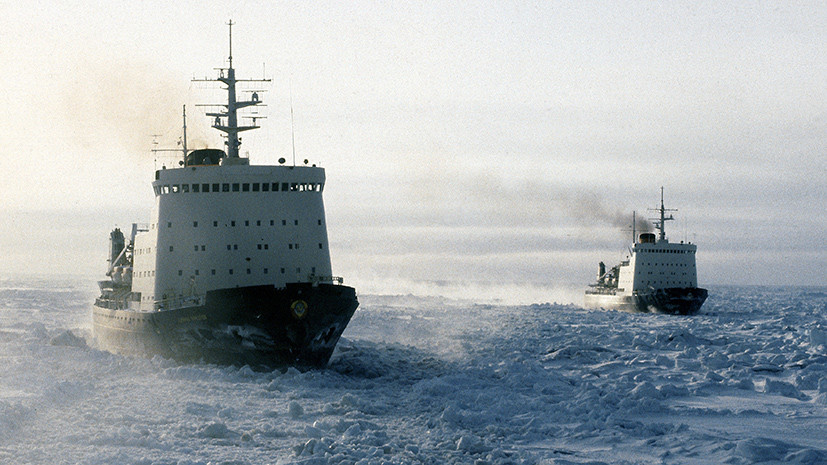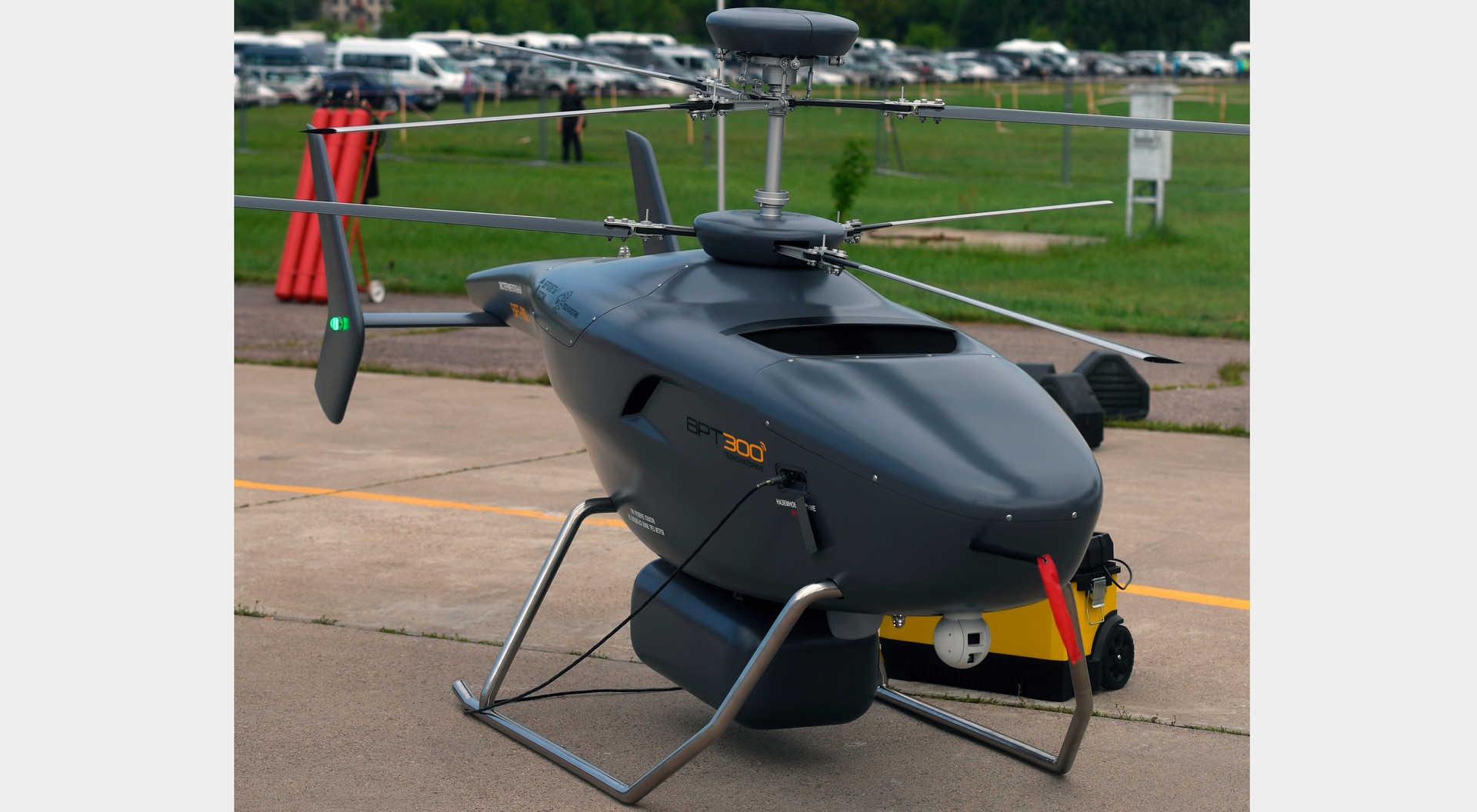The general director of the Kalashnikov concern, Vladimir Dmitriev, at the VII International Forum "The Arctic: Present and Future" presented the Zala Arctic unmanned system. The device is designed for year-round environmental monitoring. The drone was developed by the Zala Aero Group (part of the “Kalashnikov”), which occupies a leading position in the market of Russia's compact UAVs.
A UAV is able to detect and identify ships at a distance of up to 100 km. Zala Arctic can be in the air for about four hours and perform tasks at wind speeds of 25 m / s and temperatures up to -50 ° C. As Dmitriev stressed, the peculiarity of this drone is the possibility of using the alternative navigation system Girasm created by the Kalashnikov in 2018 (if there is no satellite signal GLONASS or GPS).
“The biggest problem is landing a drone on an arctic ship. But our equipment has been successfully tested ... The temperature and weather conditions of the Arctic for our complexes are not critical. Most of our products can be used in high latitudes, ”Dmitriev said.

- Caravan of ships in the Arctic
- RIA News
Earlier, on the request of the Central Research Institute of Morflot, experts of the Zala Aero Group conducted tests of unmanned aircraft ZALA 421-06 and ZALA 421-08. Drones are controlled by a small ground station, and if necessary it can be replaced with a tablet or mobile phone with special software.
Aerotaxi and unmanned helicopters
The founder of the Moscow company ADA Aerospace, Alexander Milevsky, presented at the forum "The Arctic: the Present and the Future" the Triada convertible planes range with a flight range from 80 to 1.6 thousand km. These devices are able to be in the air from one to eight hours at temperatures up to -50 ° C.
“In the Arctic, generators cannot always work. We have solutions that allow us to operate devices with power sources up to -50 ° C. R & D (research and development work. - RT ) is at the stage of development that will allow the devices to operate at lower temperatures (-70 ° C), ”said Milevsky.
According to him, tiltrotor planes are ideal for reconnaissance of ice conditions, search for wide passages in the ice and transportation of cargo. The advantages of this device are in vertical takeoff and horizontal landing. This greatly facilitates the process of operating the drone. At the same time, the tiltrotor is inferior in speed to the aircraft, and in terms of reliability it is inferior to the helicopter.
In the future, according to Milevsky, convertoplanes will be able to transport people hundreds of kilometers away at a cost price of 350 rubles for one passenger. The head of ADA Aerospace said that the Triada X model, in particular, will possess such capabilities due to the wide use of energy-efficient technologies. Convertoplan can take on up to five passengers at the same time, performing the function of aerotaxi. A prototype of a unique UAV is planned to be assembled in 2020.
The joint project of the SV Aviation Complex can become the largest Russian air drone. Ilyushin and the Kronstadt Group. The drone is created on the basis of the Il-112 light transport aircraft.
At present, the Russian Helicopters holding is testing a VRT300. It is intended for conducting ice reconnaissance. It is assumed that the drone will be in demand due to the rapid growth of cargo traffic along the Northern Sea Route. Next year, the UAV should be certified, and in 2020 it is planned to begin selling it.

- The first Russian unmanned helicopter VRT-300
- © Ilya Pitalyov / RIA News
A feature of the VRT300 is the use of a Kamov coaxial circuit (two screws rotate in opposite directions. - RT ). It is more expensive than the usual single-rotor system, but at the same time allows to increase the stability of the device to wind gusts. The maximum take-off weight of the device is 300 kg, the payload mass is 70 kg.
VRT300 is being developed in two versions. The Arctic type of this UAV (Arctic Supervision) will be equipped with side-view radar. As expected in the holding, he will become an indispensable assistant to the crews of icebreakers, ships and drilling platforms.
Another version of the VRT300 - Opticvision - will be universal. The main task of the device is monitoring and remote sensing of the Earth. Thus, Opticvision will be able to map the terrain, conduct search operations, prevent emergencies and transport small loads.
Sarma, Shadow and Drilling Station
Russian enterprises pay much attention to the development of the direction of uninhabited underwater vehicles (NPA). At the present time, drones of the “Harpsichord” and “Juno” families are used in the Polar Region. However, they cannot work effectively under the ice, they have a limited battery charge, which significantly reduces their autonomy.
In October, Igor Denisov, Deputy Director General of the Foundation for Advanced Studies (FPI), reported on the development of the Sarma sea drone for seismic exploration that had begun. According to him, the device will be able to overcome 10 thousand km, without rising to the surface. Specialists of the Central Design Bureau “Lazurit” (Nizhny Novgorod) are working on the project.
However, domestic design thought went even further. At the forum "The Arctic: Present and Future," Alexey Blinkov, deputy head of the defense research and development department of St. Petersburg State Maritime Technical University (SPbGMTU), presented a draft of the promising robotic apparatus "Shadow-2" with enhanced autonomy and variable hull geometry.

- Sketch of the work of the underwater vehicle "Shadow-2"
- © “Arctic: Present and Future”
This drone is a similarity to the American Sea-Hunter tri-type drone. “Shadow-2” is an initiative developed by SPbGMTU and the Main Research and Testing Center of Robotics (GNIITS RT) of the Ministry of Defense of the Russian Federation. Currently, a conceptual image and prototypes of individual units have been prepared.
The main task of this device is to conduct seismic exploration. He must confidently cope with the strong emotion of the water and work under the ice. The drone displacement will be 169 tons, carrying capacity - 60 tons, autonomy - 88 days, maximum speed in surface position - 26.43 knots (48.9 km / h), range of surface stroke at 6 nodes (11.1 km / h) - 12.77 thousand miles (20.5 thousand km).
Structurally, “Shadow-2” consists of a universal underwater-surface robot, which is the carrier of small-sized drones with seismic sensors, as well as devices capable of selecting and analyzing soil and water samples.
Yevgeny Toropov, Chief Designer of the Central Design Bureau for Marine Engineering (TsKB MT) Rubin, at the Arctic: Present and Future forum, spoke about his view on the further development of seismic exploration technologies in the Arctic. According to him, the most promising direction is the use of the swarm of the PPA.
The management of drones will be carried out using special containers with sophisticated equipment, which are dropped from the ship (icebreaker) or from a Mi-26 helicopter into the sea. However, according to Toropov, it makes sense to develop a special drone for transportation of uninhabited vehicles. The scientist is confident that the project can be implemented within three years.
One of the key activities of Rubin is the development of an unmanned underwater drilling complex. According to Toropov, its approximate cost is $ 1 billion. The expert notes that this is a relatively small amount for the Arctic direction, since the average cost of equipment for drilling a well on the Arctic Ocean shelf may exceed $ 800 million.

- Outline image of underwater drilling complex
- © “Arctic: Present and Future”
Work on the project is about four years. In addition to the "Rubin", they participate in them Russian State University of Oil and Gas. Gubkina (Moscow), JSC "Afrikantov OKBM" (Nizhny Novgorod), National Research Center "Kurchatov Institute" (Moscow), All-Russian Research Institute of Hydraulic Engineering. Vedeneeva (St. Petersburg).
As noted Toropov, currently in the world there is no underwater drilling rig. Thus, Russia can become the first owner of a unique technology for drilling offshore wells. The length of the drilling module is 36 m, the operational height is 41.7 m, the width is 13 m, and the weight on land is 1.8 thousand tons.
In a conversation with RT, the director of the Museum of the Arctic and Antarctic in 1998–2016, the honorary polar explorer of Russia, Viktor Boyarsky, emphasized that engineering thought in Russia is developing in the “right direction”. In his opinion, domestic experts seek to solve the fundamental problem of modern underwater and air systems, which lies in their limited autonomy.
“If navigation along the Northern Sea Route becomes year-round or comes close to this, then Russia cannot do without devices capable of performing tasks under a layer of ice and in the air at extremely low temperatures. Of course, for this it is necessary to solve a lot of problems, but without effective NLA and UAVs, it will be very difficult to ensure the safety of the passage of ships, ”concluded Boyarsky.
